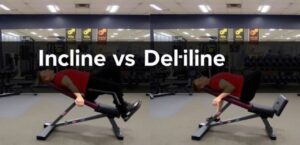Rib flare is more than just a postural quirk—it’s a visible sign that the body’s alignment is off, often affecting people with pectus deformities like pectus excavatum or pectus carinatum. While it might seem minor on the surface, rib flare can impact breathing, athletic performance, and confidence. Fortunately, with the right exercises and commitment, you can dramatically improve rib positioning and overall posture. This article dives into the six best rib flare exercises specifically tailored to address pectus deformity. These moves aren’t just corrective—they’re empowering.
1. Diaphragmatic Breathing: The Foundation of Rib Control
Before jumping into more intensive exercises, it’s essential to reconnect with your breath. Diaphragmatic breathing helps retrain your ribcage to move properly and lays the foundation for all other corrections.
Why It Matters:
- Encourages rib mobility and expansion
- Strengthens the diaphragm and core synergy
- Reduces upper chest breathing habits
How To Do It:
Lie on your back with knees bent. Place one hand on your chest and the other on your abdomen. Breathe in slowly through your nose, letting your belly rise while keeping the chest still. Exhale through pursed lips. Practice for 5–10 minutes daily.
2. Dead Bug Exercise: Mastering Core Stability
The dead bug targets deep core muscles that play a crucial role in rib positioning and spinal alignment.
Why It Matters:
- Strengthens transverse abdominis
- Teaches spinal and rib stability under movement
- Reduces exaggerated spinal curves that cause rib flare
How To Do It:
Lie on your back, arms extended toward the ceiling, knees bent at 90 degrees. Slowly lower your opposite arm and leg while keeping your back flat against the floor. Return to the start and switch sides.
3. Wall Angels: Retraining Your Posture
Wall angels help align your thoracic spine and scapula, allowing your ribcage to sit more naturally.
Why It Matters:
- Improves thoracic extension and shoulder mobility
- Encourages proper spinal stacking
- Retrains back muscles that support the rib cage
How To Do It:
Stand with your back, hips, and arms against a wall. Slowly raise and lower your arms like making a snow angel, keeping contact with the wall. Perform 2–3 sets of 10 reps.
4. Pelvic Tilt With Core Engagement: Correcting Lumbar Overextension
Often, rib flare stems from overarched lower backs. Pelvic tilts realign the pelvis and reduce lumbar extension.
Why It Matters:
- Teaches pelvic neutrality
- Supports abdominal engagement
- Improves rib-pelvis relationship
How To Do It:
Lie on your back with knees bent. Flatten your lower back against the floor by tilting your pelvis up and engaging your core. Hold for 5 seconds, then release. Repeat for 10–15 reps.
5. Overhead Reach with Exhale: Engaging Core in Full Range
This simple but effective movement strengthens the core and teaches how to maintain rib position while reaching overhead.
Why It Matters:
- Reinforces rib control during movement
- Strengthens lower abs and obliques
- Reduces compensation from chest muscles
How To Do It:
Lie on your back with a resistance band or lightweight object in both hands. Inhale to prepare, then exhale as you reach your arms overhead while maintaining rib and core engagement. Return and repeat.
6. Side Plank with Reach: Total Core Integration
This variation on the classic side plank brings in rotation and rib awareness, firing up obliques and improving trunk control.
Why It Matters:
- Builds lateral core strength
- Stabilizes ribs during rotation
- Challenges posture under dynamic load
How To Do It:
Start in a side plank. While holding the position, reach your top arm under and across your body in a controlled twisting motion. Return and repeat. Do both sides for balanced engagement.
H3: Extra Tips for Maximum Results
- Consistency is key—practice these exercises 4–5 times a week.
- Combine with soft tissue work on the abs and lower ribs.
- Avoid overtraining chest exercises like pushups without balancing core and back.
- Consider working with a physiotherapist for a personalized approach.
- Monitor posture throughout the day, not just during workouts.
A properly aligned ribcage not only looks better but feels better. With patience and the right movements, real and lasting change is absolutely possible.
Your Body Deserves Patience and Praise
Improving rib flare, especially alongside a pectus deformity, is a journey—one that takes persistence, self-awareness, and a little creativity. These six exercises are more than just tools for better posture; they’re keys to unlocking a stronger, more confident you. Every time you lie down for a dead bug or focus on that mindful breath, you’re showing up for yourself in a powerful way.
Stick with it, listen to your body, and celebrate even the smallest improvements. Change doesn’t happen overnight—but it does happen. Keep going—you’ve got this.

Emily Rose Johnson is a passionate writer with a knack for crafting engaging content. She specializes in communication strategies, digital marketing, and creative storytelling.









